Journalism is a dynamic and ever-evolving field, where precision and clarity in language are paramount. Whether you are an aspiring journalist or simply keen on understanding the world of media, grasping the core terminology used in journalism is essential. This blog post delves into the 50 most common journalism English terms, providing you with clear definitions, phonetic transcriptions, and illustrative examples.
Table of Contents
- 50 Journalism English Terms Every Student Must Know
- #1. Byline 📝
- #2. Lede 📜
- #3. Copy 🖋️
- #4. Lead 🏆
- #5. Inverted Pyramid ⛰️
- #6. Editorial ✍️
- #7. Op-ed 🗣️
- #8. Beat 🎤
- #9. Headline 📰
- #10. Source 🔍
- #11. Scoop 🏆
- #12. Fact-checking 🔎
- #13. Quote 🗯️
- #14. Angle 🎯
- #15. Attribution 🏷️
- #16. Newsworthy 🌟
- #17. Editor 🖊️
- #18. Pitch 📧
- #19. Sidebar 🗂️
- #20. Editor-in-chief 🏅
- #21. Deadlines ⏰
- #22. Lead story 🌟
- #23. Columnist ✍️
- #24. Breaking news 🚨
- #25. Press release 📢
- #26. Beat reporter 🎤
- #27. Coverage 🌍
- #28. Publisher 🏢
- #29. Investigative journalism 🔍
- #30. Journalistic integrity 📜
- #31. Follow-up 📝
- #32. Exclusive 🔒
- #33. Factoid 🧠
- #34. Lead time ⏳
- #35. News cycle ⏲️
- #36. Press conference 📅
- #37. Editorializing 🗨️
- #38. Wire service 📡
- #39. Press pool 📸
- #40. Tabloid 📰
- #41. Broadsheet 🗞️
- #42. Press pass 🎫
- #43. Soundbite 🎤
- #44. Feature story 📖
- #45. Briefing 📋
- #46. Coverage area 🌍
- #47. Anonymous source 🕵️♂️
- #48. Coverage bias ⚖️
- #49. Spin 💫
- #50. Follow-up story 🔄
- Journalism English Terms Table
- Wrapping Up
50 Journalism English Terms Every Student Must Know
By familiarizing yourself with these terms, you’ll gain valuable insights into the industry, enhancing both your writing and comprehension skills. From basic terms like “byline” to more complex concepts such as “lede,” our guide will help you navigate the intricate language of journalism.
Each term is explained in a straightforward manner, making it accessible for both beginners and seasoned professionals. Get ready to boost your journalism vocabulary and take your understanding of media terminology to the next level!
#1. Byline 📝
Definition: A line that names the author of an article.
Phonetic Transcription: /ˈbaɪ.laɪn/
Examples:
- The byline of the article read “Jane Doe, Senior Reporter.”
- Check the byline to see who covered the latest news story.
#2. Lede 📜
Definition: The introductory section of a news article, summarizing the main points.
Phonetic Transcription: /liːd/
Examples:
- The lede of the story highlighted the major earthquake in the city.
- Ensure your lede captures the essence of the news to engage readers.
#3. Copy 🖋️
Definition: The main text of a news article or editorial.
Phonetic Transcription: /ˈkɒp.i/
Examples:
- The editor reviewed the copy before publishing it online.
- Good copy should be clear, concise, and free of errors.
#4. Lead 🏆
Definition: The opening sentence or paragraph of a news story, designed to grab attention.
Phonetic Transcription: /liːd/
Examples:
- The lead of the report was designed to attract immediate interest.
- A strong lead can make the difference between a captivating story and a dull one.
#5. Inverted Pyramid ⛰️
Definition: A news structure where the most important information comes first, followed by details.
Phonetic Transcription: /ɪnˈvɜːrtɪd ˈpɪr.ə.mɪd/
Examples:
- The article used the inverted pyramid style to present key facts upfront.
- Journalists often use the inverted pyramid to ensure that essential information is conveyed quickly.
#6. Editorial ✍️
Definition: An article expressing the opinions of the editorial staff or publisher.
Phonetic Transcription: /ˌedɪˈtɔːrɪəl/
Examples:
- The editorial took a strong stance on recent policy changes.
- Many readers look to editorials for insight into the newspaper’s viewpoint.
#7. Op-ed 🗣️
Definition: An opinion piece written by a guest writer or columnist.
Phonetic Transcription: /ˌɑːp ˈɛd/
Examples:
- The op-ed section featured a thought-provoking article on climate change.
- Op-eds offer diverse perspectives on current issues.
#8. Beat 🎤
Definition: A specific area of news coverage that a journalist is assigned to.
Phonetic Transcription: /biːt/
Examples:
- Her beat includes local government and city council meetings.
- Covering the crime beat requires a keen eye for detail and accuracy.
#9. Headline 📰
Definition: The title of a news article, designed to attract readers’ attention.
Phonetic Transcription: /ˈhɛd.laɪn/
Examples:
- The headline was bold and succinct, drawing readers to the story.
- Crafting an effective headline is crucial for engagement.
#10. Source 🔍
Definition: A person or document that provides information for a news story.
Phonetic Transcription: /sɔːrs/
Examples:
- The journalist verified the source before publishing the article.
- Reliable sources are vital for accurate reporting.
#11. Scoop 🏆
Definition: An exclusive news story obtained before other media outlets.
Phonetic Transcription: /skuːp/
Examples:
- The reporter landed a major scoop on the upcoming election.
- Getting the scoop on a breaking story can boost a journalist’s career.
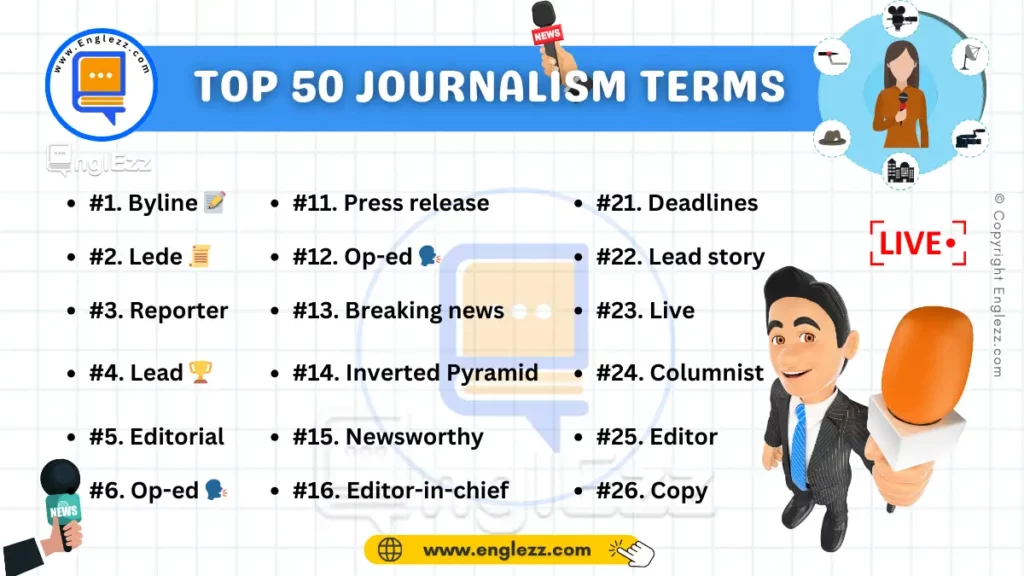
#12. Fact-checking 🔎
Definition: The process of verifying the accuracy of information in a news story.
Phonetic Transcription: /fækt ˈʧɛkɪŋ/
Examples:
- The fact-checking team ensured all data in the article was accurate.
- Proper fact-checking prevents the spread of misinformation.
#13. Quote 🗯️
Definition: A direct repetition of someone’s spoken or written words.
Phonetic Transcription: /kwəʊt/
Examples:
- The journalist included a quote from the mayor in the article.
- Quotes add credibility and authenticity to a news story.
#14. Angle 🎯
Definition: The specific perspective or approach taken on a news story.
Phonetic Transcription: /ˈæŋɡl/
Examples:
- The angle of the story focused on the economic impacts of the new policy.
- Finding a unique angle can make a story stand out.
#15. Attribution 🏷️
Definition: Identifying the source of information or quotes in an article.
Phonetic Transcription: /ˌætrɪˈbjuːʃən/
Examples:
- Proper attribution is crucial for maintaining journalistic integrity.
- The article included clear attribution for all cited sources.
#16. Newsworthy 🌟
Definition: Worthy of being reported as news due to its significance or interest.
Phonetic Transcription: /ˈnjuːzˌwɜːði/
Examples:
- The sudden resignation of the CEO was considered highly newsworthy.
- Newsworthy events often make the headlines due to their impact.
#17. Editor 🖊️
Definition: A person who reviews and revises news articles before publication.
Phonetic Transcription: /ˈedɪtə/
Examples:
- The editor made several changes to the article for clarity.
- Editors ensure that articles meet the publication’s standards.
#18. Pitch 📧
Definition: A proposal for a news story or article submitted to an editor.
Phonetic Transcription: /pɪtʃ/
Examples:
- She submitted a pitch for a feature article on local entrepreneurs.
- A strong pitch can lead to an assignment for a major story.
#19. Sidebar 🗂️
Definition: A brief, supplementary piece of information related to a main story.
Phonetic Transcription: /ˈsaɪdˌbɑːr/
Examples:
- The sidebar provided additional context to the main news story.
- Sidebars are useful for highlighting relevant details.
#20. Editor-in-chief 🏅
Definition: The highest-ranking editor responsible for the overall editorial direction.
Phonetic Transcription: /ˈedɪtə r ɪn ʧiːf/
Examples:
- The editor-in-chief approved the major changes to the newspaper’s layout.
- The editor-in-chief sets the tone for the publication’s content.
#21. Deadlines ⏰
Definition: The date or time by which a news article must be completed.
Phonetic Transcription: /ˈdɛdˌlaɪn/
Examples:
- Meeting deadlines is crucial for timely news reporting.
- Journalists often work under tight deadlines to cover breaking news.
#22. Lead story 🌟
Definition: The most important or prominent news story in a publication.
Phonetic Transcription: /liːd ˈstɔːri/
Examples:
- The lead story on the front page covered the election results.
- Lead stories are chosen for their significance and impact.
#23. Columnist ✍️
Definition: A writer who contributes regular opinion pieces or commentary.
Phonetic Transcription: /ˈkɒləmnɪst/
Examples:
- The columnist’s opinions on economic policy were widely read.
Columnists often offer personal perspectives on current events.
#24. Breaking news 🚨
Definition: Newly received information about a recent event that is still developing.
Phonetic Transcription: /ˈbreɪkɪŋ njuːz/
Examples:
- The broadcast switched to breaking news about a major accident.
- Breaking news requires immediate and accurate reporting.
#25. Press release 📢
Definition: An official statement issued to the media to announce something.
Phonetic Transcription: /prɛs rɪˈliːs/
Examples:
- The company issued a press release about its new product launch.
- Press releases are often used to disseminate important information.
#26. Beat reporter 🎤
Definition: A journalist who specializes in reporting on a specific topic or area.
Phonetic Transcription: /biːt rɪˈpɔːrtə/
Examples:
- The beat reporter for the education sector covered school board meetings.
- Beat reporters develop expertise in their assigned areas.
#27. Coverage 🌍
Definition: The range of news reported by a publication or broadcast.
Phonetic Transcription: /ˈkʌvərɪdʒ/
Examples:
- The coverage of the international summit was extensive and detailed.
- Comprehensive coverage ensures all aspects of a story are addressed.
#28. Publisher 🏢
Definition: The person or company responsible for producing and distributing a publication.
Phonetic Transcription: /ˈpʌblɪʃər/
Examples:
- The publisher decided to expand the newspaper’s digital presence.
- Publishers manage the overall operation and content of their publications.
#29. Investigative journalism 🔍
Definition: A type of journalism that seeks to uncover hidden or obscure information.
Phonetic Transcription: /ɪnˌvɛstɪˈɡeɪtɪv ˈdʒɜːrnəlɪzm/
Examples:
- Investigative journalism exposed the corruption within the city government.
- This type of journalism often involves thorough research and in-depth reporting.
#30. Journalistic integrity 📜
Definition: Adherence to ethical principles and honesty in reporting.
Phonetic Transcription: /ˌdʒɜːrnəˈlɪstɪk ɪnˈtɛɡrɪti/
Examples:
- Maintaining journalistic integrity is crucial for building trust with readers.
- Ethical reporting practices are central to upholding journalistic integrity.
#31. Follow-up 📝
Definition: An article or report that provides additional information on a previously covered story.
Phonetic Transcription: /ˈfɒloʊ ʌp/
Examples:
- The follow-up article covered the ongoing effects of the policy change.
- Follow-ups keep the audience informed about developments in a story.
#32. Exclusive 🔒
Definition: A news story that is unique to a particular publication or outlet.
Phonetic Transcription: /ɪkˈskluːsɪv/
Examples:
- The newspaper published an exclusive interview with the celebrity.
- Exclusives often draw significant attention due to their unique content.
#33. Factoid 🧠
Definition: A small, interesting, and usually trivial fact.
Phonetic Transcription: /ˈfæktɔɪd/
Examples:
- The article included a factoid about the history of the city.
- Factoids can add engaging details to a news story.
#34. Lead time ⏳
Definition: The period between the preparation of a story and its publication.
Phonetic Transcription: /liːd taɪm/
Examples:
- The lead time for the magazine’s next issue is two weeks.
- Understanding lead time helps in planning timely news coverage.
#35. News cycle ⏲️
Definition: The period during which a news story remains current and relevant.
Phonetic Transcription: /njuːz ˈsaɪkl/
Examples:
- The news cycle for major political events can last several days.
- Media outlets often focus on the news cycle to maintain relevance.
#36. Press conference 📅
Definition: An event where media representatives are invited to hear and ask questions about a news story.
Phonetic Transcription: /prɛs ˈkɒnfərəns/
Examples:
- The company held a press conference to announce its new product line.
- Press conferences provide direct access to key information and statements.
#37. Editorializing 🗨️
Definition: Adding personal opinions or interpretations to a news report.
Phonetic Transcription: /ˌedɪˈtɔːrɪəˌlaɪzɪŋ/
Examples:
- Avoid editorializing to maintain the objective nature of news reporting.
- Editorializing can lead to perceived bias in news coverage.
#38. Wire service 📡
Definition: A news agency that provides stories and information to multiple media outlets.
Phonetic Transcription: /ˈwaɪər ˈsɜːrvɪs/
Examples:
- The wire service reported on the global summit with real-time updates.
- Many newspapers rely on wire services for timely news coverage.
#39. Press pool 📸
Definition: A group of journalists assigned to cover a specific event or location.
Phonetic Transcription: /prɛs puːl/
Examples:
- The press pool followed the president during his overseas visit.
- Press pools help manage coverage for high-profile events.
#40. Tabloid 📰
Definition: A type of newspaper known for sensationalism and compact size.
Phonetic Transcription: /ˈtæblɔɪd/
Examples:
- The tabloid featured sensational headlines about celebrity scandals.
- Tabloids often focus on entertainment and human interest stories.
#41. Broadsheet 🗞️
Definition: A large-format newspaper known for detailed reporting and serious journalism.
Phonetic Transcription: /ˈbrɔːdʃiːt/
Examples:
- The broadsheet newspaper provided in-depth coverage of the economic crisis.
- Broadsheets are typically larger and feature comprehensive news analysis.
#42. Press pass 🎫
Definition: An official document granting a journalist access to events and locations.
Phonetic Transcription: /prɛs pæs/
Examples:
- The press pass allowed the reporter to cover the live event from the front row.
- Press passes are essential for gaining entry to restricted areas.
#43. Soundbite 🎤
Definition: A short, catchy excerpt from a speech or interview used in media.
Phonetic Transcription: /ˈsaʊndˌbaɪt/
Examples:
- The politician’s soundbite was repeated across news channels.
- Effective soundbites can significantly impact the audience’s perception.
#44. Feature story 📖
Definition: A detailed, in-depth article that explores a subject beyond the news.
Phonetic Transcription: /ˈfiːtʃər ˈstɔːri/
Examples:
- The feature story delved into the life of a local hero.
- Feature stories often provide a comprehensive look at their subjects.
#45. Briefing 📋
Definition: A short meeting or document providing key information about a topic.
Phonetic Transcription: /ˈbriːfɪŋ/
Examples:
- The daily briefing included updates on the latest news developments.
- Briefings are used to quickly inform journalists of important news.
#46. Coverage area 🌍
Definition: The geographical or thematic scope of news reported by a media outlet.
Phonetic Transcription: /ˈkʌvərɪdʒ ˈɛəriə/
Examples:
- The newspaper’s coverage area includes international and local news.
- Expanding the coverage area can attract a broader audience.
#47. Anonymous source 🕵️♂️
Definition: A source of information who requests to remain unidentified.
Phonetic Transcription: /əˈnɒnɪməs sɔːrs/
Examples:
- The journalist used an anonymous source to reveal confidential information.
- Anonymous sources are used when disclosing identities could jeopardize their safety.
#48. Coverage bias ⚖️
Definition: The tendency of media to report news from a particular perspective or angle.
Phonetic Transcription: /ˈkʌvərɪdʒ ˈbaɪəs/
Examples:
- Coverage bias can affect how different audiences perceive news events.
- Recognizing coverage bias is important for understanding media perspectives.
#49. Spin 💫
Definition: A particular interpretation or presentation of news intended to influence perception.
Phonetic Transcription: /spɪn/
Examples:
- The political spin on the economic report aimed to highlight positive outcomes.
- Spin can shape how a story is received by the public.
#50. Follow-up story 🔄
Definition: A subsequent article that provides additional details or updates on a previously covered topic.
Phonetic Transcription: /ˈfɒloʊ ʌp ˈstɔːri/
Examples:
- The follow-up story detailed new developments in the ongoing investigation.
- Follow-up stories help keep readers informed about evolving news.
Journalism English Terms Table
| #1. Byline 📝 | #11. Editor 🖊️ | #21. Deadlines ⏰ |
| #2. Lede 📜 | #12. Op-ed 🗣️ | #22. Lead story 🌟 |
| #3. Copy 🖋️ | #13. Beat 🎤 | #23. Columnist ✍️ |
| #4. Lead 🏆 | #14. Inverted Pyramid ⛰️ | #24. Breaking news 🚨 |
| #5. Editorial ✍️ | #15. Newsworthy 🌟 | #25. Press release 📢 |
| #6. Op-ed 🗣️ | #16. Editor-in-chief 🏅 | #26. Beat reporter 🎤 |
| #7. Scoop 🏆 | #17. Fact-checking 🔎 | #27. Coverage 🌍 |
| #8. Fact-checking 🔎 | #18. Pitch 📧 | #28. Publisher 🏢 |
| #9. Quote 🗯️ | #19. Sidebar 🗂️ | #29. Investigative journalism 🔍 |
| #10. Angle 🎯 | #20. Editor-in-chief 🏅 | #30. Journalistic integrity 📜 |
| #31. Follow-up 📝 | #32. Exclusive 🔒 | #33. Factoid 🧠 |
| #34. Lead time ⏳ | #35. News cycle ⏲️ | #36. Press conference 📅 |
| #37. Editorializing 🗨️ | #38. Wire service 📡 | #39. Press pool 📸 |
| #40. Tabloid 📰 | #41. Broadsheet 🗞️ | #42. Press pass 🎫 |
| #43. Soundbite 🎤 | #44. Feature story 📖 | #45. Briefing 📋 |
| #46. Coverage area 🌍 | #47. Anonymous source 🕵️♂️ | #48. Coverage bias ⚖️ |
| #49. Spin 💫 | #50. Follow-up story 🔄 |
Wrapping Up
Understanding journalism terminology is crucial for both professionals and enthusiasts in the field. The 50 terms discussed here provide a solid foundation for anyone looking to grasp the nuances of media language. By mastering these terms, you can enhance your ability to both produce and critique news content effectively.
This knowledge not only aids in professional development but also helps in consuming news with a more informed perspective. Whether you are involved in writing, editing, or simply following the news, being familiar with these terms will enrich your engagement with the media landscape.
Remember, the language of journalism shapes how stories are told and perceived, making it essential to understand these core concepts.
Keep this guide handy as you navigate the world of journalism, and continue to develop your skills in this dynamic field.

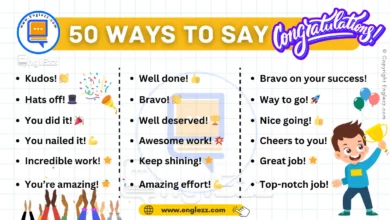
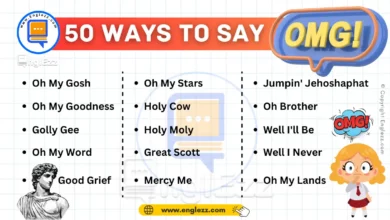

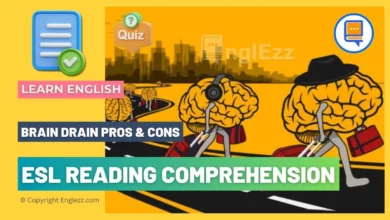
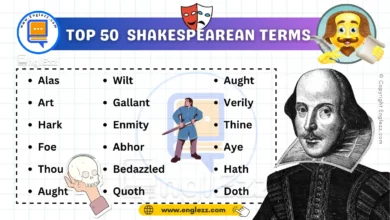

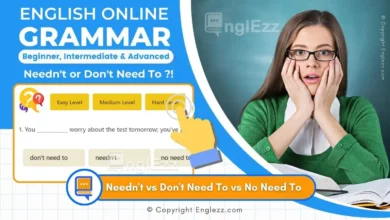
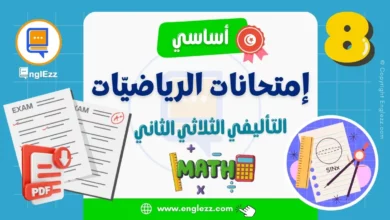
Unlock the secrets of journalism with our guide to the “50 Most Common Journalism English Terms Explained with Examples”! 📚 Whether you’re a budding journalist or just a news enthusiast, this post is your key to mastering essential media vocabulary. Dive in to discover clear definitions, phonetic transcriptions, and practical examples for each term. Don’t miss out—follow and like @EnglEzz for more insightful content! Check it out here:
.
https://www.englezz.com/common-journalism-english-terms/
.
#EnglEzz #vocabulary #linguistics #learnenglish #journalism #media #news #writingtips #education